Burgos
It was raining as we left Atapuerca and it rained on us the entire walk into Burgos. We were starting our third week on the Camino and had been pretty lucky to not have much rain the last couple of weeks.
Rainy days weren’t so bad, except for the poor traction on the trail and how sweaty we got walking in our rain gear.
The walk into Burgos seemed to take forever. The more direct route we chose took us through a less-glamorous, industrialized area. Concrete and asphalt spread in all directions, blurring our sense of time and distance.
We finally arrived at our spot for the night, a very nice municipal albergue. It was near the Burgos Cathedral, which is a UNESCO World Heritage site. It was one of the most beautiful cathedrals I had ever been in. We got to tour it, attend Mass and receive the Pilgrims Blessing there.
There was more that we wanted to see and do in Burgos, but we also felt a sense of urgency to keep moving. Peak pilgrimage season (mid-summer) was right around the corner and we didn’t want to get lost in the crowds.
The next morning, I woke up in a bad headspace. I was fighting that old nagging feeling of “not enough”. I’m not walking fast enough. I’m not logging enough kilometers. I’m not taking enough pictures.
Not seeing enough of the awesome things. Not present enough. Not resting enough.
Ah, yes. The old sneaky “enoughness” spiral.
When you’re stuck in it, it’s hard to get out. It’s like quicksand, the harder you fight to get out of it, the faster you sink.
I decided to walk through the negative thoughts and bad energy. Like I was locked into a staring contest or a game of chicken with my thoughts. The last one standing wins.
And in true Camino fashion, the Way provided both time and space for this mental standoff. As we walked out of the city of Burgos, we entered the Meseta, the expansive flat plains of central Spain.
Wide-open spaces
The Meseta is a part of the Camino that is talked about with either great reverence or total dread.
For some people, the idea of walking 135 miles on foot across a wide-open, unchanging landscape is physically daunting. Or maybe it’s the idea of having so much time with your thoughts and nothing to do but think as you walk. Nothing to distract you from facing whatever burdens you’re still carrying.
Whatever it is, a lot of pilgrims opt to bus ahead from Burgos to Astorga, skipping the Meseta.
But Andy and I are from Oklahoma. Our state song praises the beauty of the plains we call home. We move toward the Meseta with high spirits.
We weren’t on the trail long when we came upon a small church. There was a woman inside who gave each of us a milagro, a prayer medal with the image of Mother Mary, and blessed us. As we walked outside, the priest was there to anoint us with holy water and bless our journey.
It was such a simple thing but it was exactly what we needed at that moment.
I was walking out of my funk and negative energy and was ready to fully embrace the Meseta and all of its openness.

We covered 12 miles that day and arrived in the very small town of Hornillos del Camino by mid-afternoon. We were excited when we learned that there was a communal dinner offered at our albergue. We were even more excited to find out it would be homemade paella.
We lounged in the garden tending to our daily pilgrim duties, journaling, washing clothes, and enjoying a cold beer. Meanwhile, the entire family of the albergue owners fretted and fussed over the dinner preparations. It was a meal made by a whole lotta hands and a whole lotta love.
By the time we sat down to eat with the other pilgrims, there was an endless spread of paella, salad, bread, and wine. As with the previous communal dinners, there were people from all over the world. Long after the food and wine were gone, we enjoyed conversations with a man from Ireland and another from Denmark.
We talked about the similarities and differences in where we come from.
We learned that the Irish man, Frank, worked as a landscaper back home. He shared a story about his son who, when he was younger, scored a winning goal in an important soccer match. He had kept some soil from the field and used one of his cleats as a planter. A sort of living trophy.
And Christian, the Dane, was a doctor. While he was walking the Camino, his wife, an ophthalmologist, was on a sort of medical mission trip in South America. He was worried about her safety but she had insisted on going. He anxiously awaited her daily check-in call.
When we eventually all parted ways to go to bed, we felt like old friends.
My heart and my belly were full. My “enoughness” spiral was defeated.
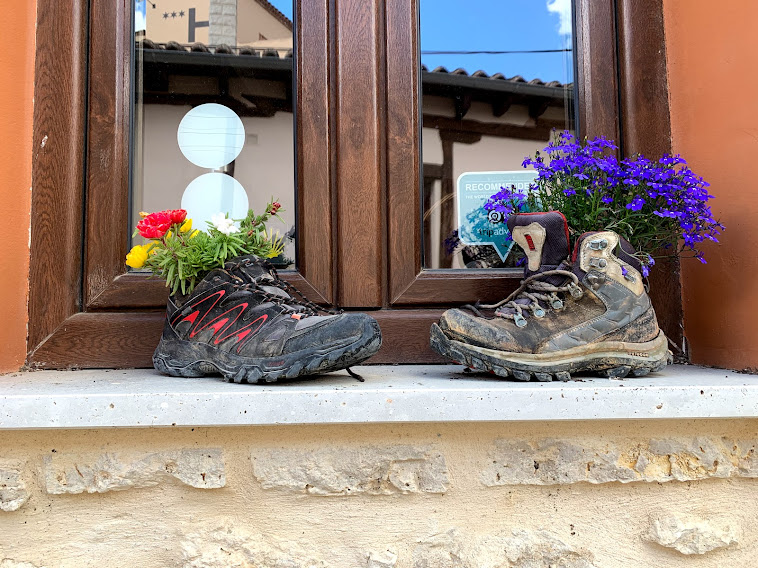
Castrojeriz
When we left Hornillos the next morning, it was the coldest, windiest morning so far— low 40s with about 25 mph gusts.
The villages on the meseta are typically built within valleys, and the walk between stops leads you up to a mesa-like high plain. And once we rose up out of Hornillos to the mesa, we were completely exposed with no windbreaks.
We briefly stopped at Arroyo San Bol, as it has a spring that allegedly cures your feet. I don’t know about “cured” (Andy still had blisters and mine still stunk) but it was definitely cold and refreshing.
We stopped at a cathedral in Hontanas where we selected a “thought” from a bowl. Mine seemed especially appropriate for this trip we are on, but it works for any scary or hard thing that takes time. We all have the same 24 hours in a day—what you do with it is up to you. If it’s not a priority, no big deal. But if it truly matters to you, you use that time and make it happen, no excuses.
Our next stop was San Antón, the 15th-century ruins of a monastery and pilgrim hospital which still serves pilgrims.
In the arches leaving the ruins, pilgrims leave notes, prayers, and messages to other pilgrims. We stopped to read a few, careful to refold and tuck them away for the next pilgrim.
Our final stop for the day was Castrojeriz and as we descended from the mesa into town, we saw ruins atop a hill in the distance.
Our feet were tired and we were dragging. We joked “there’s no freaking way I’m going up there.”
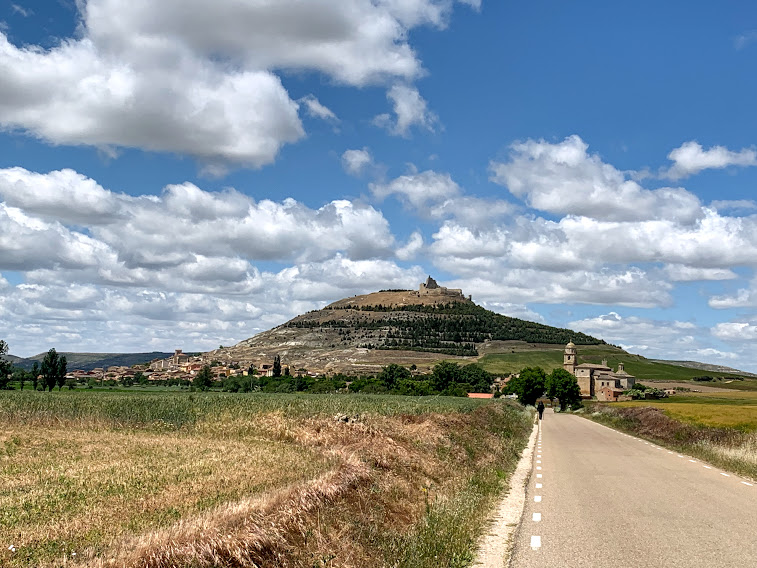
So of course, after we checked in and dropped our packs off at the albergue, Andy and I walked an extra 3 miles to the top of the hill. The ruins were from a castle that was built during the 9th and 10th centuries. From the top, we could see miles and miles in every direction farmland, wind turbines, and small towns. It was an incredible view and definitely worth the climb.
That night our albergue offered a communal dinner and again we were blessed with paella. We also happened to be seated with some of the same people from the night before, including Frank and two older couples from France.
For as unchanging as the scenery is during the day on the Meseta, the evenings are sure lively.
As we left Castrojeriz the next morning, we had a steep climb out of town to resume the mesa. By the time we reached the top, we were all sweating and panting. We paused to catch our breath and enjoy the view of the morning sun on the wide-open landscape.
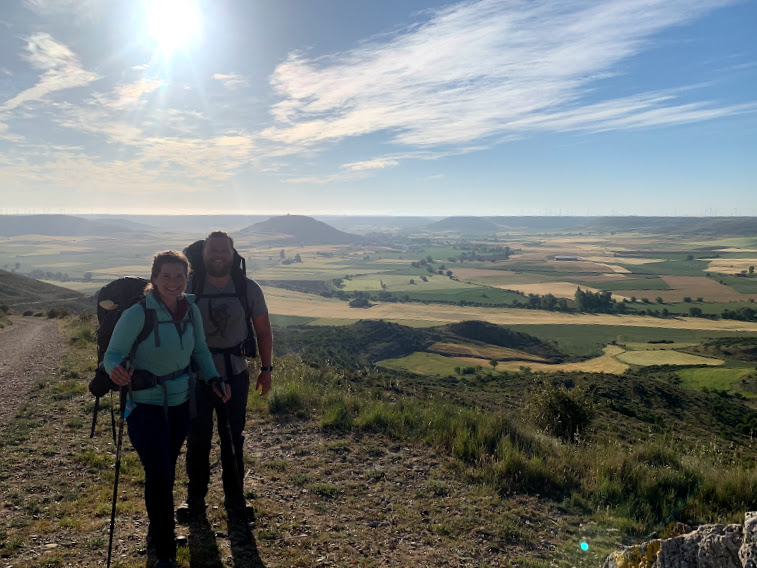
We settled in for another long day of walking, covering 16 miles by the time we got to Frómista.
We officially left the region of Burgos and entered the fourth of the six regions of Spain that the Camino Frances travels through.
We knew that in a matter of days, we would hit the halfway point for Camino Frances. The scales would finally tip in our favor and the miles ahead would be fewer than the miles behind us.
Slowly but surely, we were making progress. But the Meseta was just getting started.
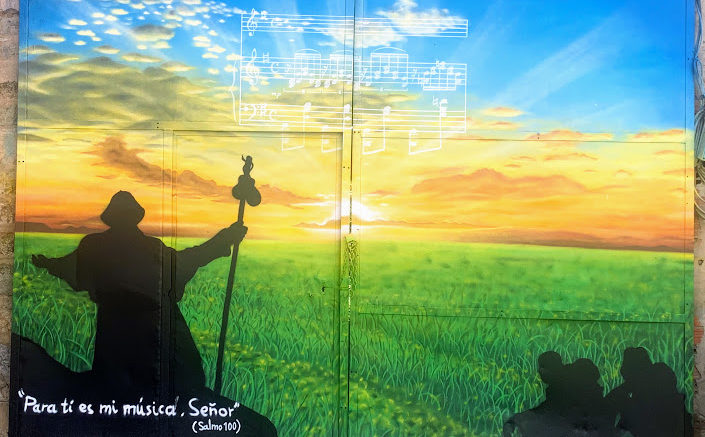
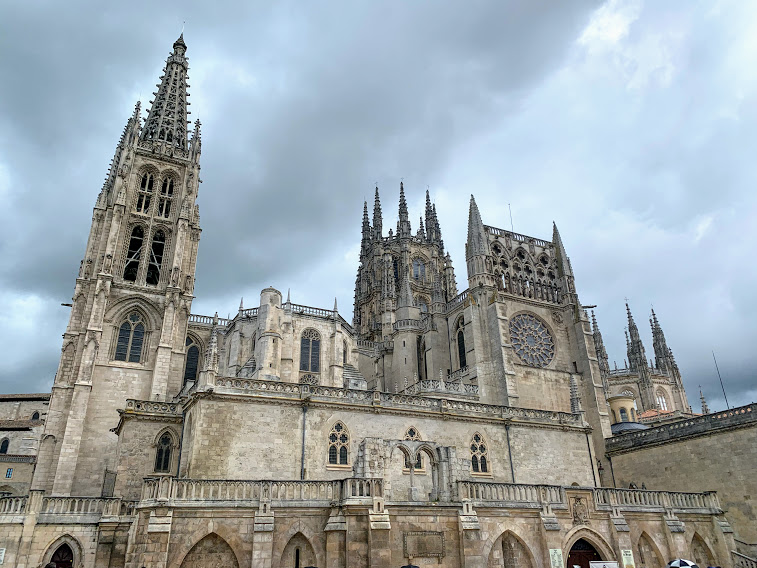

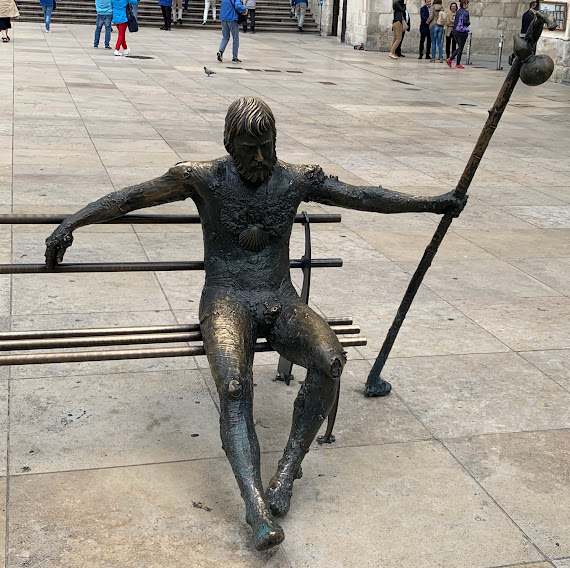
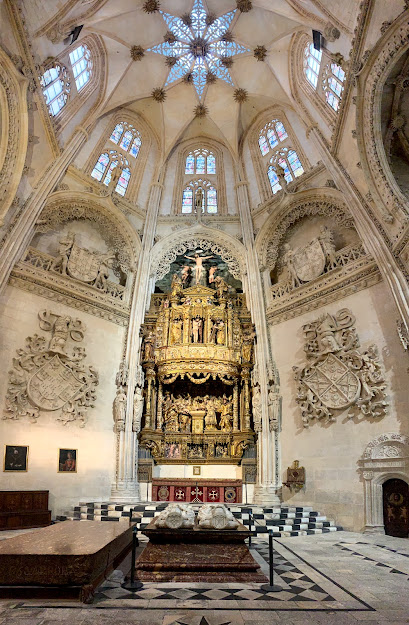


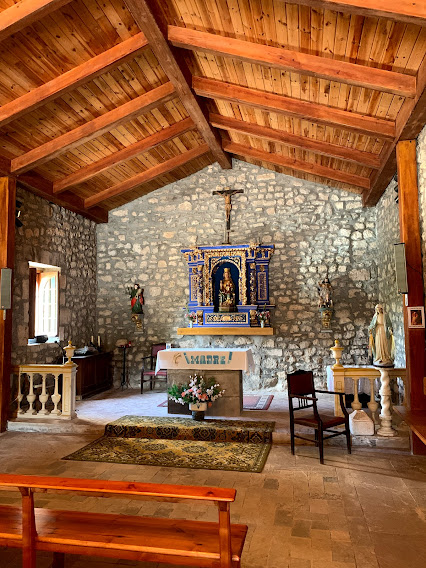
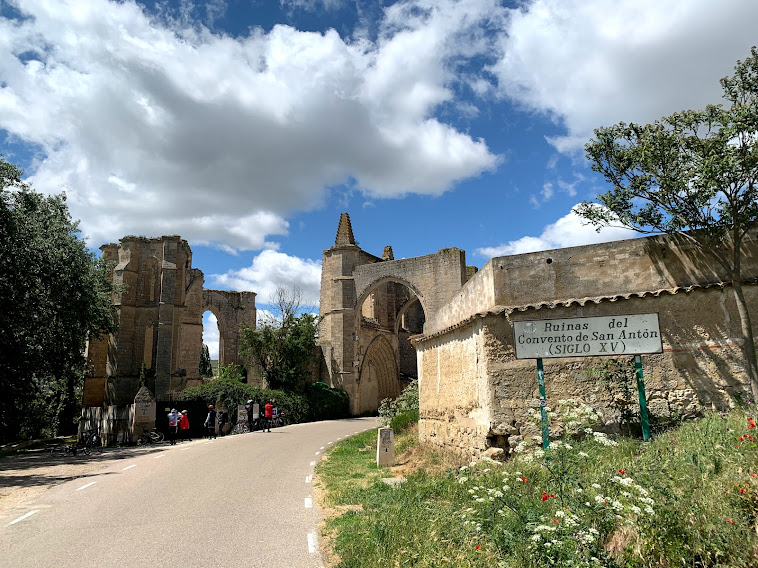
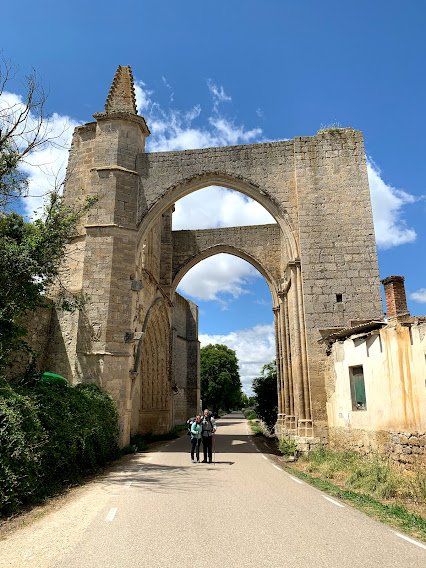

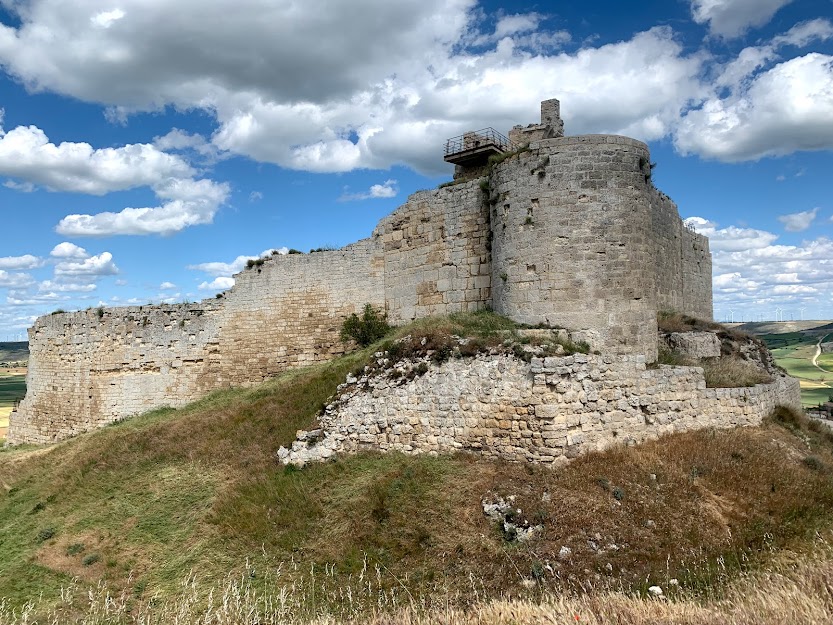
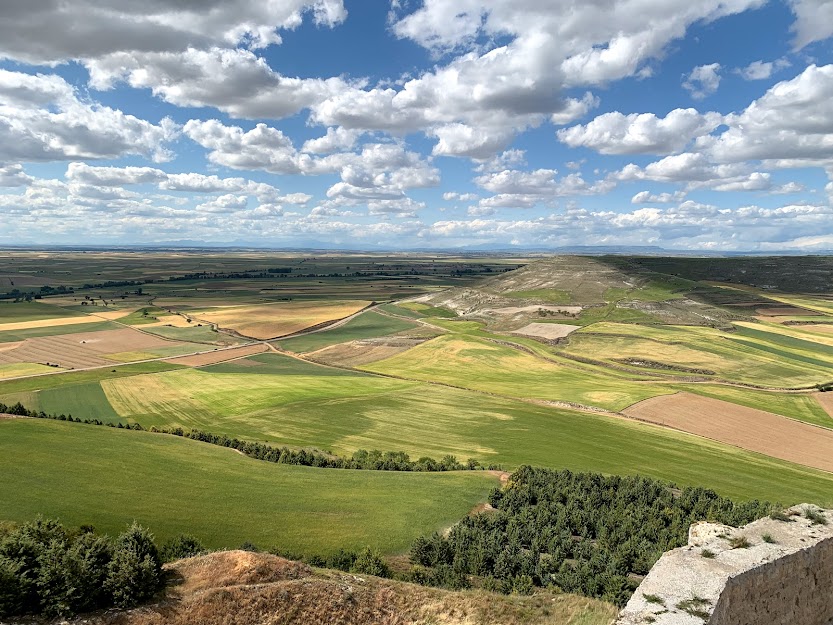
I am enjoying your description of the Camino!
I get so excited when you post a new blog! I love reading about your adventures!
I’m so happy to hear that! Thanks for reading, there’s lots more to come!
I eagerly anticipate the next installment of your journey. It must seem like a lifetime ago after the last year and one half of immersion in Vietnam.
Love your writing! You have such great descriptions of not only places, but feelings, too!